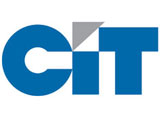 Here’s a dirty little secret for you. The market actually works and we don’t need to bail out everyone. I guess that’s two secrets.
Here’s a dirty little secret for you. The market actually works and we don’t need to bail out everyone. I guess that’s two secrets.
Remember how the imminent demise of CIT Group (NYSE:CIT)was going to tank small businesses from sea to shining sea. The usual suspects were in full Armageddon mode with predictions that if we let CIT go down it could wreak havoc on the economy. Smaller companies that relied on CIT would topple like dominoes, after all the company counted over 1 million of these precious darlings as customers, or so they alleged with nary a statistic to back up their assertions.
Well guess what happened on the way to the party. CIT has been left to fend for itself and it looks very much as if the company’s customers are adapting very well, thank you. The WSJ’s Deal Journal notes a Foresight Analytics report that indicates CIT has fallen from the number one lender to small businesses to number 16. Looks like those small businessmen and women aren’t complete dolts. They smell smoke and figure they’ll move along before the fire.
Even more less surprising is that other lenders smelled the opportunity and have been picking up market share at CIT’s expense. From smaller players like Live Oak Banking to big guys like Wells Fargo (NYSE:WFC) a lot of lenders have aggressively picked off CIT’s customers. Isn’t creative destruction wonderful?
The lessons seem obvious. Rarely is the economy as imperiled by the demise of a firm as the failed executives of that firm would like you to believe. Never is the damage going to be as extreme as those in the political class who have been bought and paid for by that failing firm would suggest. The probability that competitors will step in and limit the collateral damage is extremely high.
Refreshing isn’t it that a company can fail or come close, the system is allowed to work through the issues on its own and, Lordy, the sun comes up in the morning. Now that we’re out of crisis mode can we just keep this in mind and maybe let the economy separate the winners and losers.
Disclaimer: This page contains affiliate links. If you choose to make a purchase after clicking a link, we may receive a commission at no additional cost to you. Thank you for your support!


This article is right on target. Just like (AIG)21st Century Insurance(AIG) that was bought by Farmers Insurance. There was so much attrition at 21st(AIG) because AIG placed their folks within that company and fired the rest. Now if you look at their customer base. It went from 2 million to 300,000 maybe?
Never reward losers with your business. Never.